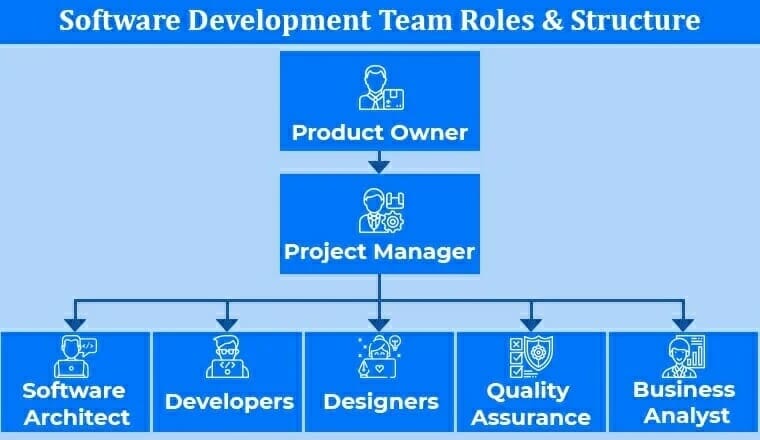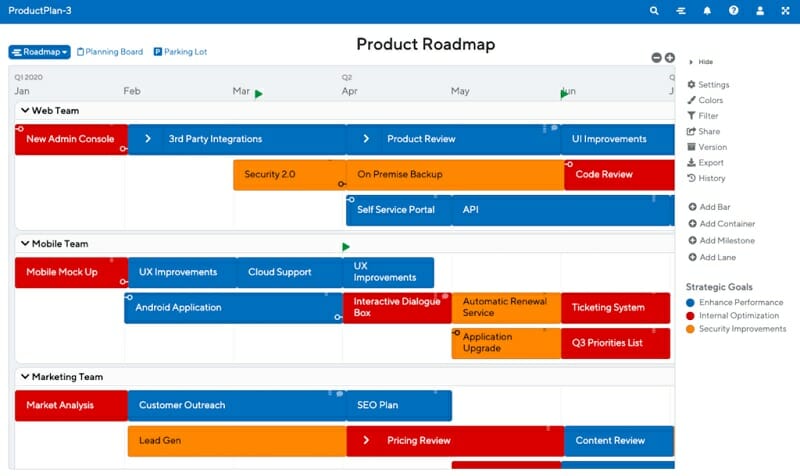What is Backlog Grooming? Definition, Goals, Advantages

Agile project management is essential for the success of product development.
A product development team must consistently and continuously manage and update its product backlogs to handle its customers’ ever-changing needs. The critical and recurring process of reviewing product backlogs is called backlog grooming.
This article will deeply dive into the agile term backlog grooming, goals, benefits, best practices, and how to run backlog refinement sessions successfully.
Let’s get started.
What is Backlog Grooming?
Backlog grooming or refinement or story time comprises a series of processes structured to refine a user story or backlog items. It is the process of reviewing the product team's backlog by the relevant stakeholder to ensure that the backlog is up-to-date with the user stories.
By prioritizing tasks according to their importance and breaking complex and large project items into smaller tasks, backlog grooming provides the needed structure for your sprint planning session.

Backlog grooming as a recurring event for your agile product development teams ensures the accompanying steps of your sprint planning process that are user story worthy in your product backlog are prepared adequately.
Regular product backlog grooming sessions offer several benefits, such as ensuring effective user story prioritization and preventing the product backlog from becoming a black hole.
What is the Goal of Backlog Grooming?
A refined backlog that details a prioritized list of your user stories is the ideal outcome of regular backlog grooming sessions. Backlog grooming sessions are structured to ensure your user story and backlog items are detailed appropriately in the proper prioritization framework.
At the end of a successful backlog grooming process, your list of backlog items should be structured to spell out backlog items based on their level of detail and be ready to accommodate significant and new user stories.

Break down meaningful stories into smaller tasks and reorder user stories based on their priority for better backlog management. According to a popular agile methodology, a “DEEP” product backlog is the expected outcome of backlog refinement sessions.
DEEP is an acronym for the acceptance criteria for a high-priority product backlog. Here are what each letter of the “DEEP” acronym means to a backlog grooming process.
Detailed Appropriately
User stories and backlog items need to provide enough relevant information to be understood by all members of your agile cross-functional team.
Emergent
Updating your next sprint by adding new stories as information arises should be easy.
Estimated
Roughly estimate the effort needed for each user story to form the standard the team agreed on. Items that fall at the bottom of the backlog should be roughly estimated.
Prioritized
Rank all items on the backlog based on their strategic purposes and story points.
Backlog Grooming Benefits
If done with the backlog grooming best practices, your recurring backlog grooming sessions assist product managers in keeping track of their backlog items to guarantee customer success.
Here are some fundamental reasons why product managers should incorporate backlog grooming into their agile framework.
1. Keeps the Backlog Clean
Your backlog is often faced with inputs from all quarters of your organization's teams and departments, depending on its suitable size and structure. If these inputs are not checked, your organization is poised to have a messy backlog.
By grooming your backlog, your product and software development teams can quickly move through the list of items on your backlog and function more effectively.

2. Improves the Backlog Relevancy
Backlog refinement sessions are structured to ensure that only relevant items are documented on your product roadmap and prioritized according to your customer needs.
The backlog refinement process is not a sure guarantee for task execution, as a task appearing on the list does not guarantee it should or would be executed. Only the functions identified as relevant during the backlog refinement session get featured in the upcoming sprints.
3. Keeps the Whole Product Team Updated
The backlog refinement process allows for effective communication among agile scrum teams and ensures all team members are on the same page. With an adequately groomed backlog, it is easier for each team member to go about their activities.
4. Improves Work Velocity
Your product teams are better positioned to offer feature requests to clients at a fast rate with a well-groomed backlog.
By reducing the average time product managers and product owners spend on sprint planning, your groomed backlog guarantees better productivity for your organization.

Who Owns The Backlog Grooming Process?
Depending on the structure of your agile teams and your organization's method for carrying out their activities, you can use the backlog grooming process as a series of regular recurring meetings.
Who runs backlog refinement sessions? At the helm of affairs of every backlog grooming session is the product manager or product owner. These individuals ensure the smooth conduct of the backlog grooming process.
The Scrum master, project manager, and other team members can also lead backlog grooming sessions since it is not an official ceremony determined by the agile method.

Who Should Attend Backlog Grooming Sessions?
All departments need to be part of backlog grooming or refinement sessions, but inviting all members can be chaotic. Too many collaborators make the grooming sessions ineffective due to too many ideas being brought to the table.
The invitation issued to individuals granting them access to a backlog refinement session should be strictly determined by their level of involvement in the processes around product building.
Here is a comprehensive list of who should be granted access to backlog grooming sessions.
- Meeting Leader
- The Product Owner
- The Product Manager
- Representatives from the Product Team
- Delivery Team
- Lead Engineers
Besides these individuals, inviting members from customer success, support, and quality assurance can benefit your organization. These groups of individuals provide the needed insights into the inputs contained in the backlog.
Your backlog grooming sessions must be as collaborative as possible and should cut across all cross-functional teams at your organization's disposal.
With your cross-functional team's combined expertise, the production process's leadership is better suited to iron out relevant and large user stories.

How Should a Product Owner Prepare for Backlog Grooming?
All members invited to a backlog grooming session must do extensive research to ensure they have basic knowledge of the activities to be discussed.
Product owners and product managers tasked with anchoring these sessions must devote the most time to preparing for these sessions. The efficacy of the backlog grooming session, to a large extent, rests on the shoulders of these individuals.
Here is a list of items needed to be covered by product owners in their preparation for backlog grooming meetings.
1. Revisit Strategic Objectives
Returning to revisiting the strategies detailed in your organization's product roadmap is the first step a product owner should take when preparing for a backlog grooming meeting.
An extensive understanding of the objectives outlined in your product roadmap would go a long way in positioning you for a successful backlog grooming meeting outcome.
Set up a plan for the backlog grooming session to ensure the session is on track with the plan instead of committing time to the needless dissection of a particular backlog item.

2. Consult with Relevant Stakeholders
Considering customer feedback before going for backlog grooming meetings provides product owners with an idea of the impact their developed products are making in the market.
Collecting feedback from your organization's internal and external stakeholders makes you better informed on the ongoing product development process.

3. Review Key Metrics
Running the achievements and progress made by your team members against predetermined key metrics helps you with the proper perspective needed before your backlog grooming meeting. Your pre-set standard vital metrics will determine if you need to reevaluate priorities.
Combine These Backlog Grooming Best Practices With Project Management Software
Irrespective of if your organization is running on a Scrum or Kanban framework as its agile project management methodology, project management software can come in handy for better management of your backlog grooming processes.
Combining the most effective backlog grooming practices alongside effective project management software goes a long way in increasing the efficacy of your backlog grooming.
An effective project management software helps you stay on track with your product grooming activities to get the most out of all your sprint planning sessions. You can set up effective workflows with a dedicated folder for your backlog, which serves as a central system.
All incoming tasks, feature requests, and upcoming sprints now have a centralized platform where they can be channeled and addressed according to their determined priority levels.
The items on your backlog-based list are flexible and can be subjected to changes as determined during your backlog grooming sessions.
The best project management software to combine these backlog grooming best practices include: